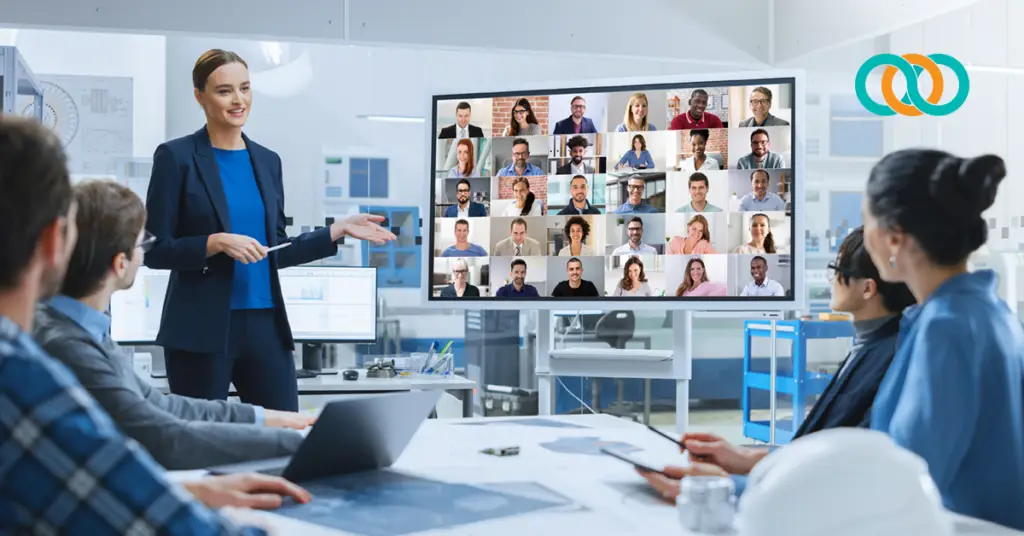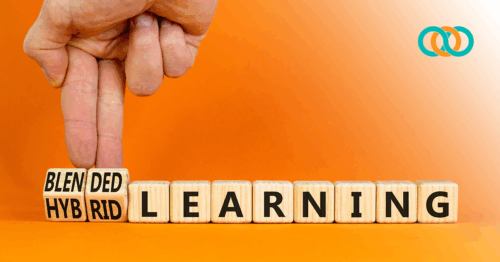The way we approach learning has transformed dramatically in recent years. The traditional boundaries between in-person and online training have blurred, giving rise to hybrid learning—where facilitators manage simultaneous engagement with both in-person and virtual participants. While this approach offers unparalleled flexibility and inclusivity, it also presents unique challenges, particularly for facilitators.
Corporate facilitators and facilitation consultants in hybrid learning environments are tasked with connecting learners across physical and digital spaces, ensuring that both groups feel equally engaged and valued. Their role extends far beyond traditional teaching methods, requiring a mastery of technology, adaptability, and strong interpersonal skills. Success in hybrid learning requires facilitators to bridge the gap between virtual and in-person learning environments seamlessly.
Understanding the Modern Hybrid Learning Facilitator
Hybrid learning is not just about delivering content through different formats. Facilitators in this environment must ensure that virtual and in-person learners experience equitable engagement, access to resources, and opportunities for collaboration.
Traditional teaching methods no longer define our role completely. Facilitators now are tasked with creating dynamic experiences that put learning directly into students’ hands. This change matters because studies show that high-performing organizations are 52% more effective at delivering tailored learning experiences compared to their counterparts.
Facilitators in hybrid settings must master four essential competencies:
- Seamless Integration: Balancing in-person and virtual participation within a single learning experience.
- Technological Fluency: Using digital tools effectively to monitor, support, and engage learners.
- Equitable Interaction: Ensuring that virtual participants have a voice equal to their in-person counterparts.
- Adaptability: Responding dynamically to challenges in both physical and digital spaces.
Mastering these skills ensures that hybrid learning environments remain inclusive and impactful for all participants.
Strategies for Creating an Effective Hybrid Learning Environment
Facilitators are central to the success of hybrid learning. They must foster trust, enable collaboration, and ensure clarity of communication across both groups of learners. Hybrid learning requires a deliberate and strategic approach to engagement that combines human connection with thoughtful use of technology.
Key Strategies for Success
1. Technological Integration
Facilitators must become proficient with hybrid-friendly tools such as Zoom, Microsoft Teams, and virtual whiteboards. These tools help bridge the gap between in-person and virtual learners, creating opportunities for collaboration and interaction in real-time.
2. Equity in Engagement
A remote-first mindset is essential in hybrid learning. Facilitators must ensure that remote participants are included in discussions, activities, and decision-making. This can be achieved through tools like chat features, breakout rooms, and digital polls, which provide equal opportunities for participation.
3. Community Building Across Modalities
Create a shared sense of community by fostering connections between in-person and virtual learners. This might involve using shared collaboration tools, such as Google Docs or Slack, where learners can contribute ideas, give feedback, and build relationships regardless of location.
4. Dynamic Time Management
Managing time effectively in hybrid learning means balancing the needs of both groups. Facilitators can use structured activities like simulations, group projects, and peer reviews to engage both in-person and virtual participants simultaneously.
5. Adaptive Problem-Solving
Technology issues can disrupt hybrid learning environments, so facilitators should consider enlisting a virtual classroom producer. This person handles technical challenges, allowing the facilitator to focus on delivering content and maintaining learner engagement.
6. Clear and Inclusive Communication
Facilitators must use communication strategies that work for both groups. This includes repeating questions asked by in-person participants for the benefit of virtual learners, addressing virtual participants directly, and ensuring that everyone’s contributions are acknowledged.
Overcoming Challenges in Hybrid Learning
Hybrid learning is uniquely challenging due to the need to simultaneously manage two distinct groups of learners. Facilitators must address common issues like:
- Maintaining Engagement: Virtual participants may feel overlooked compared to in-person learners. Facilitators can combat this by actively involving remote learners in discussions and activities.
- Technology Troubles: Tech hiccups are inevitable, but proactive troubleshooting and having a dedicated support person can minimize disruptions.
- Coordination Between Groups: Ensuring that activities feel cohesive for both groups requires careful planning and clear instructions.
These challenges can be addressed with preparation, creativity, and a willingness to adapt. Collecting feedback from learners—both in-person and virtual—can help facilitators refine their approaches over time.
Conclusion
Facilitators are at the heart of hybrid learning success. Their ability to navigate the complexities of engaging in-person and virtual learners simultaneously makes all the difference. By mastering key skills like technological fluency, inclusive communication, and adaptive problem-solving, facilitators can create cohesive and engaging hybrid learning experiences.
Hybrid learning is here to stay, offering flexibility and inclusivity for learners across the globe. Facilitators who embrace this evolution will not only bridge the gap between virtual and in-person learning but also lead the way in creating meaningful and effective training experiences.
Download 6 Reasons You Need a Virtual Classroom Producer
Does your learning and development department have more projects than people? TrainingPros has been named as a Top 20 Staffing Company internationally by Training Industry. Coupling this award with being voted as a top Custom Content Development company internationally by our consultants for five years in a row underscores TrainingPros’ unwavering commitment to delivering high-quality, tailored training solutions. If you need facilitation consultants or virtual classroom producers skilled in hybrid training, contact one of our industry-expert relationship managers today. When you have more projects than people™, let us find the consultant to start your project with confidence. Schedule a consultation today.
- 2shares
- LinkedIn1
- Twitter0
- Facebook0
- Love This1











